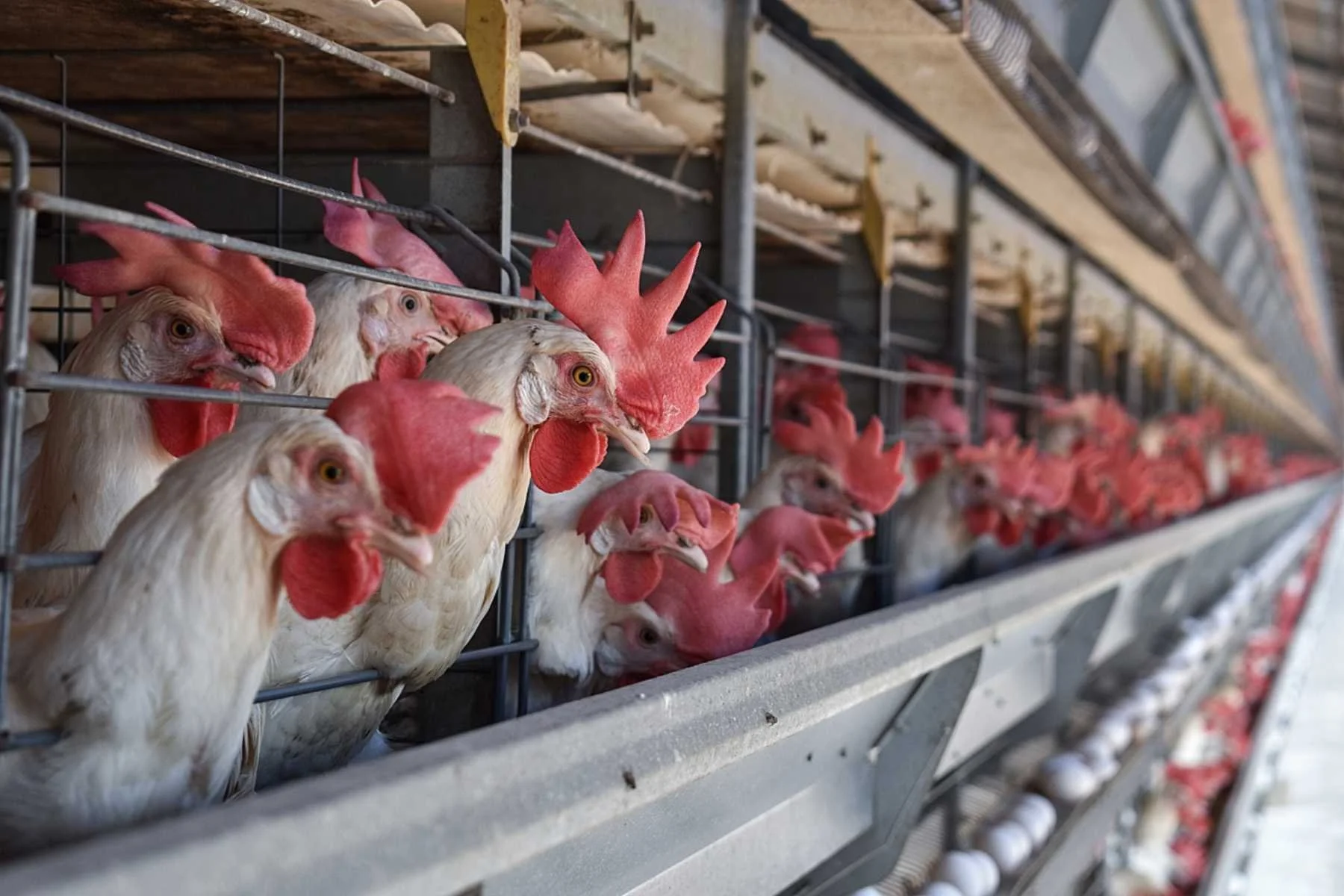The bird flu is leaving a trail of destruction in the animal kingdom. Are humans next?
From California to Antarctica, the bird flu has spread to nearly every corner of the globe. The current strain, Avian Influenza H5N1, is causing alarm for a troubling reason: it’s spreading rapidly beyond birds. Today, the United States reported its first-ever human death from H5N1 in Louisiana, raising new, terrifying concerns about the virus's potential impact on human health. While the effect of COVID-19 still lingers, one question is being asked more frequently: Could H5N1 be the next global pandemic?
Credit: Andrew Skowron
What is bird flu and how is it spreading so rapidly?
Bird flu is exactly what it sounds like: a type of flu (influenza) that predominantly infects birds (avian). It was first described in 1878 in northern Italy and later identified in 1955 as a type A influenza virus, the most significant type for disease. Since then, there have been numerous reports of these bird flu outbreaks.
A major factor in the global spread of bird flu is wild waterfowl, such as ducks and geese. These birds can carry the virus without showing symptoms and spread it over long distances through migration. When they come into contact with domestic poultry, like chickens and turkeys, the virus can be transmitted, causing outbreaks in domestic flocks.
Like all flu viruses, bird flu is constantly evolving. Scientists are closely monitoring its changes as it spreads across the globe in the bodies of birds. The H5N1 strain, in particular, is being closely watched due to its dangerous nature. This strain is highly pathogenic, meaning it can cause severe disease and high mortality rates. From 2020 to now, H5N1 has been on the rise. Initially detected in Europe in 2020, it expanded to Africa, the Middle East, Asia, and the Americas. By 2023, it had also reached Antarctica.
This strain is zoonotic, meaning it can infect both birds and mammals, including humans. H5N1 has now been reported to have affected at least 48 mammal species, ranging from foxes and tigers to sea lions and even a polar bear. It is estimated that thousands of mammals and more than 280 million birds have been killed by the virus. This has led to the greatest decline in the world’s wild bird population in decades, effectively making it a panzootic—a pandemic in the animal kingdom. Though wild birds have helped spread the virus, Thijs Kuiken, a pathologist at Erasmus University, warns the BBC that “people are the real problem”.
“Though wild birds have helped spread the virus, people are the real problem.”
The devastating impact on factory-farmed animals
H5N1 has not only devastated wildlife but has also led to mass infections among factory-farmed poultry. In the US alone, over 112 million birds have been affected, with outbreaks in multiple states. While some birds die from the virus, the majority—both infected and healthy—are killed to contain its spread.
The US poultry industry uses three main methods to kill birds during outbreaks, disturbingly labeled as ‘humane’:
Ventilation Shutdown (VSD): Poultry houses are sealed, and ventilation is turned off, causing heat and humidity to rise. Birds slowly overheat and die in extreme distress.
Water-Based Foam: A thick foam is sprayed over the birds, suffocating them as it blocks their airways. This method causes panic and fear as they struggle to breathe.
Gassing: Birds are exposed to high concentrations of carbon dioxide. They suffocate or endure severe pain as their lungs burn or freeze from the gas delivered via high-pressure hoses.
Credit: Amy Jones/Moving Animals
“Poultry farmers are used to ‘depopulating and repopulating’ their birds,” says Ray Smith, director-general of MPI, as if killing thousands - sometimes millions - of animals at once is just another routine part of the job. But why is it a routine part of the job? The answer is simple: factory farming.
Factory farms are breeding grounds for viruses like bird flu. By cramming thousands of animals into densely packed spaces, they create the perfect environment for diseases to spread like wildfire. Egg-laying hens are stacked in cold steel cages, one on top of the other, without even being able to spread their wings. Turkeys are bred, drugged and genetically manipulated to be so obese they can’t even naturally reproduce. Pregnant pigs are confined to gestation crates so small they can’t even turn around. The list of horror goes on and on. These animals are robbed of their ability to express natural behaviors, subjected to extreme stress, and left vulnerable to illness.
The overcrowded, unsanitary, and stressful conditions these animals are subjected to also weaken their immune systems, making them even more vulnerable to disease. To create a false sense of control, these animals are routinely given high doses of antibiotics, making them even more susceptible to antibiotic-resistant bacteria. 99% of livestock in the US are factory-farmed. This includes approximately 10 billion animals per year. The UN report ‘Preventing the Next Pandemic’ states that over 50% of zoonotic diseases in humans are linked to agricultural intensification, such as factory farming.
Growing risk to humans
Efremia Konstantinou, Committee Manager for Zoonotic Diseases and One Health at Infectious Disease Alliance, states there is currently no evidence of human-to-human transmission of H5N1. However, a single deadly mutation could change that. So far, nearly 900 human infections have been reported globally, including 57 in the U.S. Tragically, the United States has now reported its first human death from H5N1, a man in Louisiana who was exposed to infected poultry and wild birds. According to Konstantinou, more than 60% of H5N1 cases have been fatal, while COVID-19's highest fatality rate was 8%, making H5N1 a much bigger threat.
Alarmingly, 34 U.S. cases were linked to exposure to infected cattle. In October, the virus was detected in pigs, with a second case following soon after. The ability of H5N1 to infect both pigs and cows is particularly concerning because it allows the virus to mix and exchange genes, increasing the risk of a new, more dangerous strain that could spread more easily to humans. Even though H5N1 poses a growing risk to humans, Konstantinou emphasizes: “There’s an urgent need for preventive measures for animals, as they are the ones suffering immensely right now”.
“There’s an urgent need for preventive measures for animals, as they are the ones suffering immensely right now.”
A ticking time bomb
It’s clear: Factory farming isn’t just cruel - it’s a ticking time bomb for public health, with animals already bearing the brunt of the suffering. We must act now to stop the cycle of exploitation and disease before it's too late. By rethinking the way we treat animals, moving away from factory farming and transitioning towards a plant-based food system, we can protect both animals and humans from the devastating consequences of zoonotic diseases. The bird flu is already a pandemic in the animal kingdom. If we don’t take action, it may soon become one in humans as well.
Choosing plant-based foods is a powerful way to reduce the risk of zoonotic diseases and promote global health. With 70 percent of our 150,000-strong Species Unite community already incorporating more plant-based meals into their diets, it's clear that many are recognizing the connection between diet, disease prevention, and animal cruelty.
Join them by signing up for our 30-Day Plant-Powered Challenge. You'll receive free recipes, expert advice, and daily support delivered straight to your inbox. Sign up here.
Written by Sarah-Manon Blok
Sarah-Manon Blok is a freelance journalist dedicated to using food as a catalyst for meaningful change. With a focus on sustainability and ethics, she inspires others through her plant-based catering service Planty To Love, her regenerative farm, and her writing to make more conscious and impactful choices.
Want to write for Species Unite? We are looking for well-written stories focusing on content that informs, inspires, and engages our audience with topics surrounding animal rights.
We Have A Favor To Ask…
Species Unite amplifies well-researched solutions to some of the most abusive animal industries operating today.
At this crucial moment, with worldwide momentum for change building, it’s vital we share these animal-free solutions with the world - and we need your help.
We’re a nonprofit, and so to keep sharing these solutions, we’re relying on you - with your support, we can continue our essential work in growing a powerful community of animal advocates this year.







